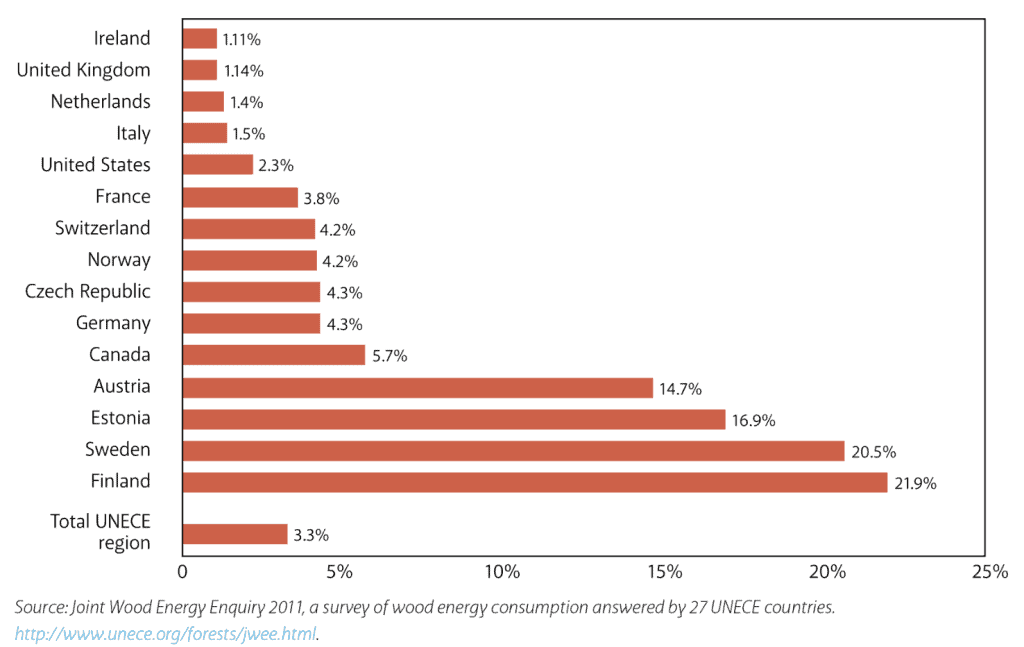Wood was one of the first, if not the first fuel humans used to keep warm and cook food with. This has been the way ever since, albeit today of course, there are other options available for warmth and cooking. In the developing world today, around 2 billion people reply on wood and other forrest products for their daily cooking and heating needs.
The term “wood energy” generally refers to raw firewood, processed charcoals, pellets, briquettes and of course seasoned logs. In the last 20 years, wood usage as a fuel has increased by 104%, and notably a large increase occurred during the recession, which indicates peoples motives for such a sustainable fuel is driven by cost and not just the environment.
The diagram below shows wood usage in Select United Nations Economic Commission for Europe member countries.

The UK and Ireland only have a wood usage of just over 1% of their total energy consumption, which is very small in comparison to countries like Sweden and Finland, both of which make up over 20% of their countries total energy consumption. Historically the usage of wood as a fuel has very much been dependant on the close locality of forests. However, due to improved transportation and distribution, this has to some degree, become less of a trend.
However, there is still clear evidence that countries with a larger proportion of forested areas have a much higher wood usage, as we can see with Sweden and Finland in the above diagram – this is also partly due to the colder winter temperatures in these countries, where additional heating is more important.
Legislation and Targets:
Wood has become a popular choice for countries looking to meet renewable energy targets. The 104% increase in wood usage, mentioned earlier in this article, in the UK and other countries in the last 20 years, could be down to a motivation by various governments to comply with the 20-20-20 directive. This directive set by the European Parliament requires 20% of total primary energy supply to come from renewable sources, combined with a 20% increase in energy efficiency and a 20% reduction in greenhouse gas emissions, by the year 2020.
The Future of Wood Energy:
From research it is clear that wood as a main source of energy is dependant to some degree on policy legislation, which we have talked about with the 20-20-20 directive, and also the market price of alternative fuels in a given country. Apart from these macroeconomic and political drivers, an awareness of wood as a green and sustainable energy source will help drive it’s continued growth among people, who think more than just complying with legislation and saving money. The fact is wood as a heating source is green and highly sustainable, and should be promoted as such.
Our range of highly efficient, environmentally friendly wood burning stoves are designed to ensure the maximum level of efficiency and heat output possible. We have a range of stoves, designed for rooms of all sizes. Click here to learn more about our range.








